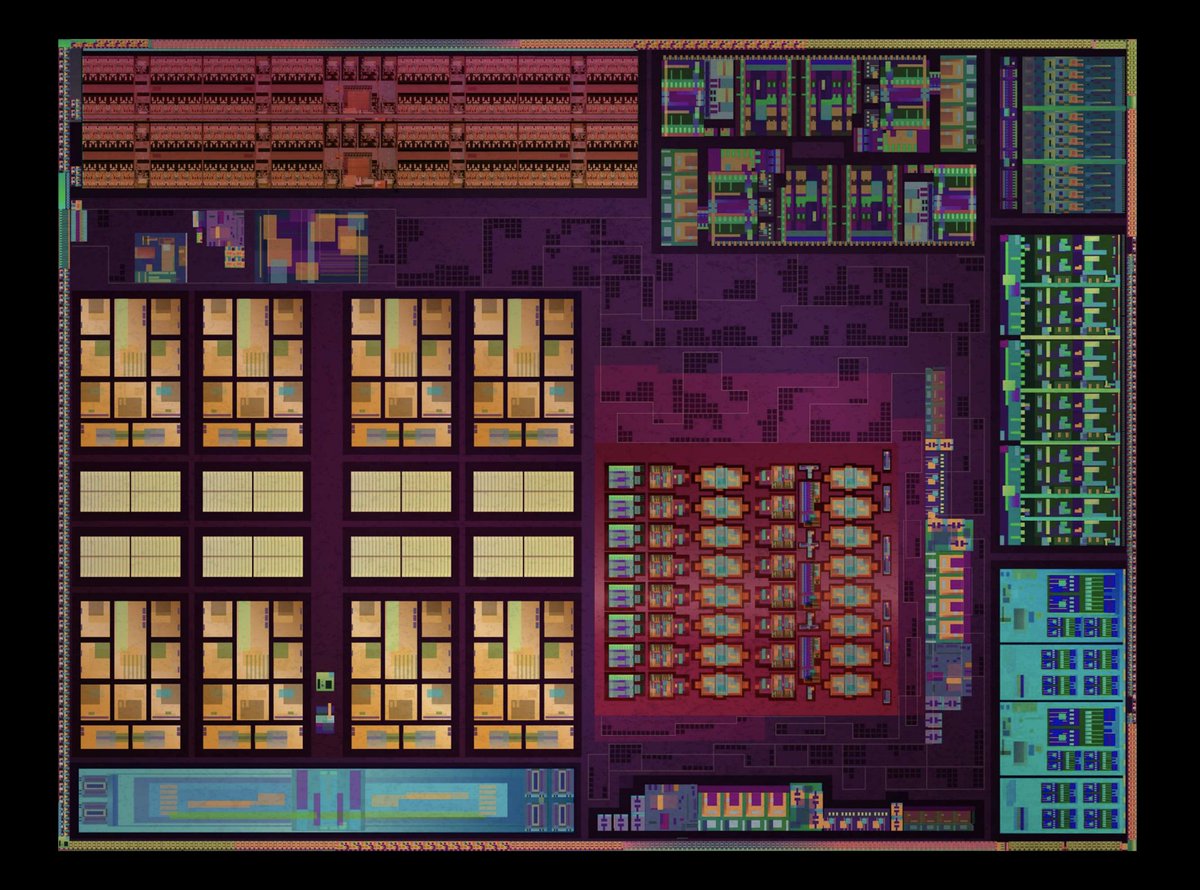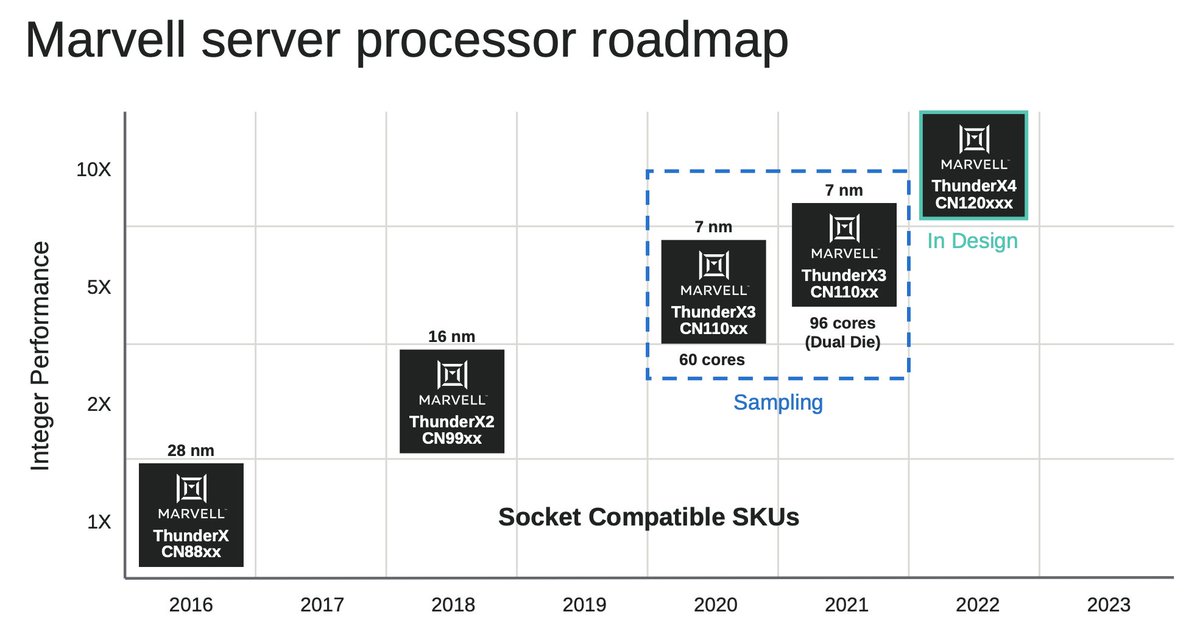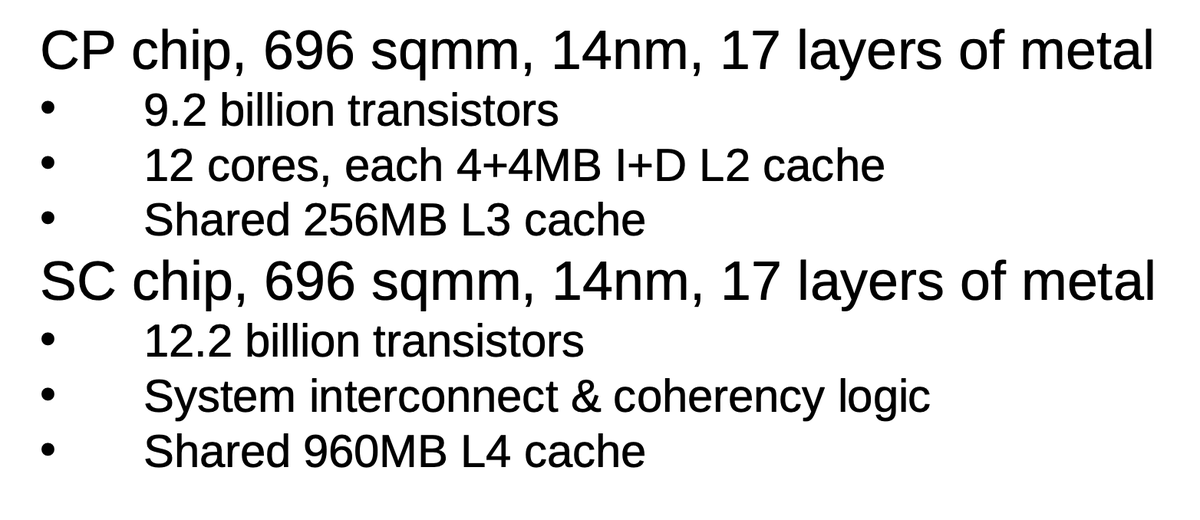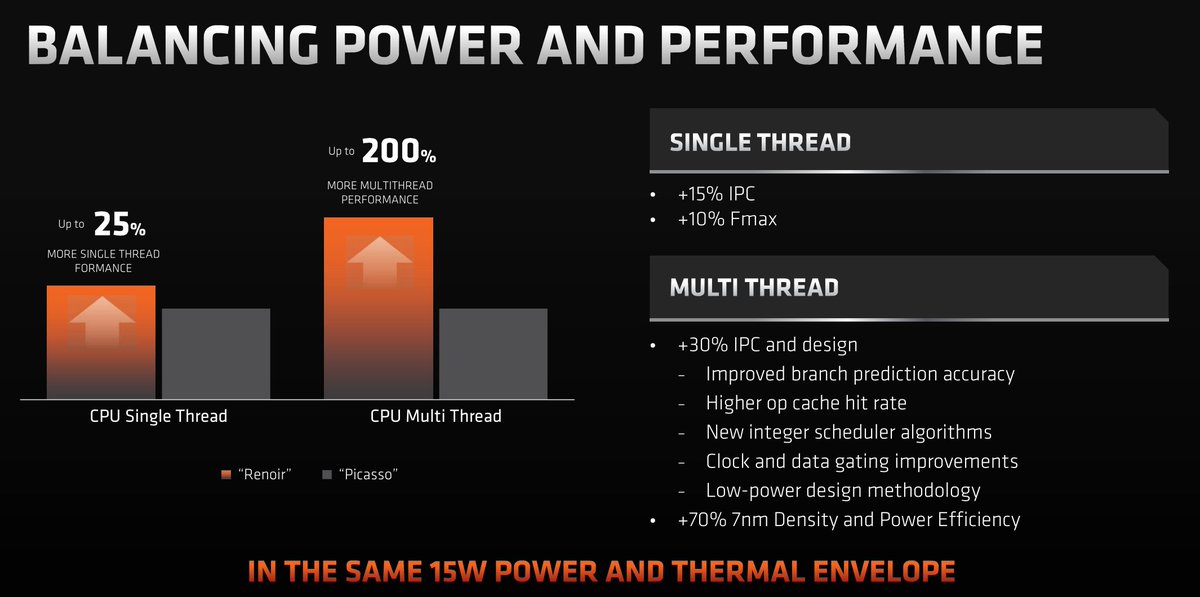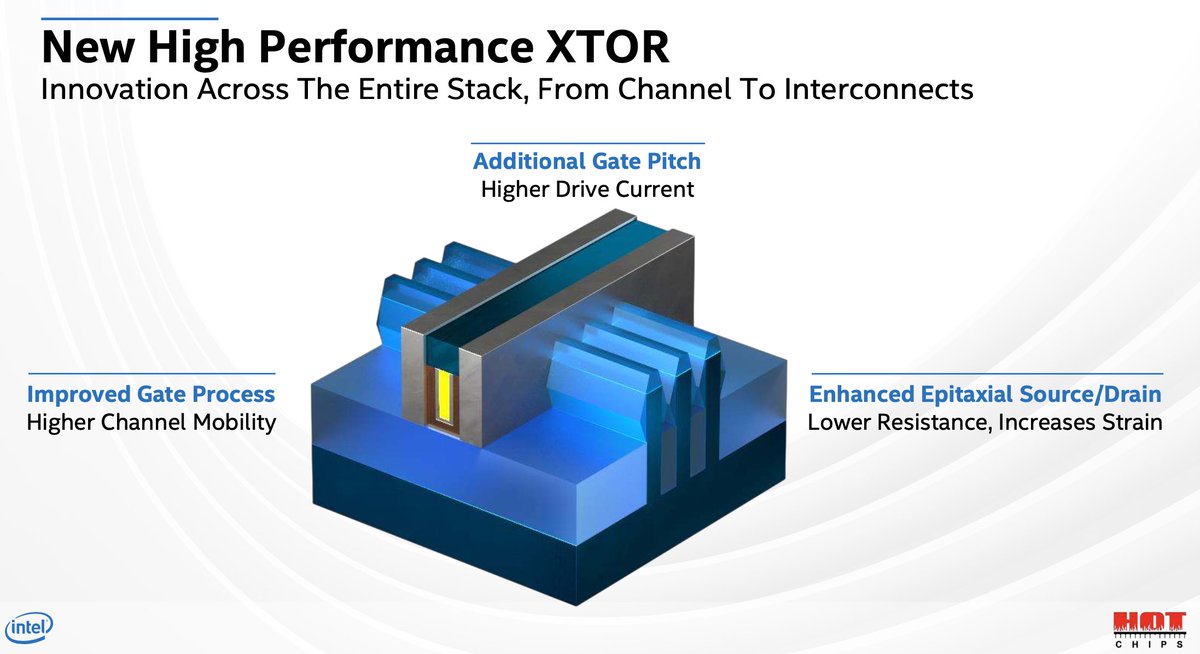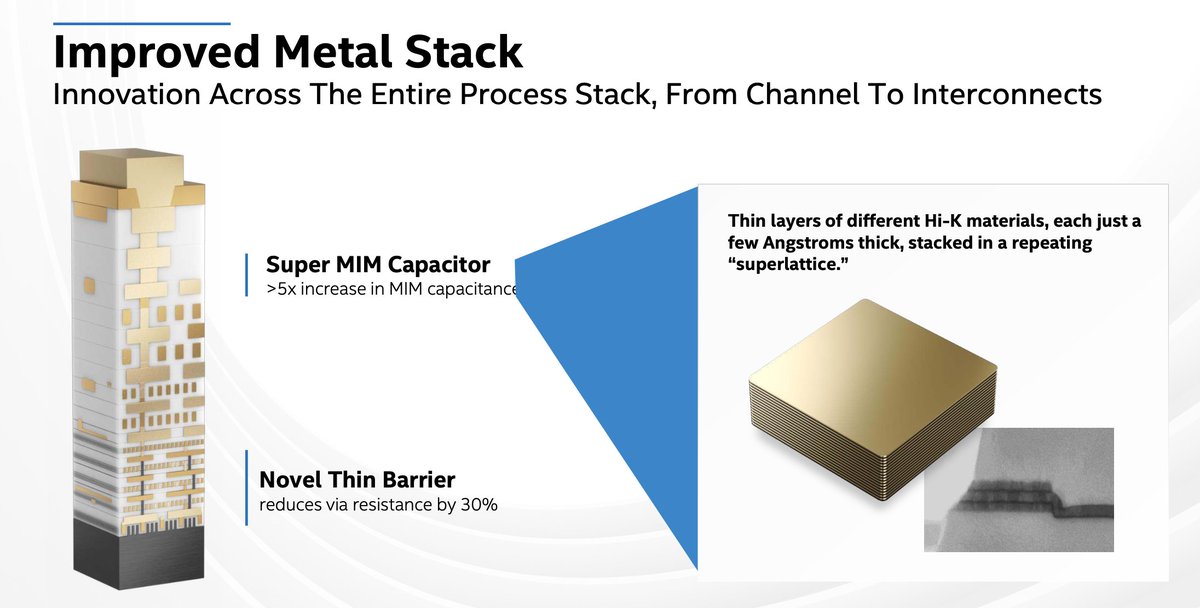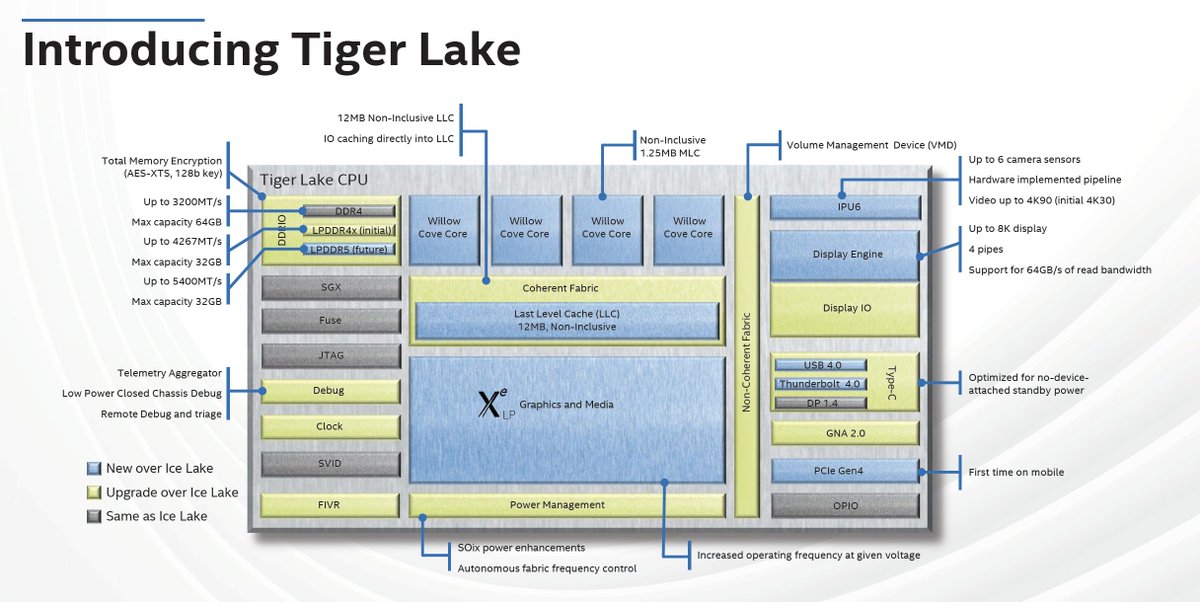I'm tuning in to #HotChips2020 today, the 32nd year of the IEEE conference. My favorite graphic so far is AMD's 8-core Ryzen 4000 family of chips, the subject of a later presentation today. Thread/
I watched the quantum computing presentations yesterday from IBM, Intel, Microsoft, and Google. Pretty interesting if you can handle the high gorpiness factor. The technology is very green, but is maturing. Here's that thread: https://twitter.com/stshank/status/1295117839108431872
Right now we're starting with server chip news from Intel and IBM. Intel Ice Lake Xeon processor for servers using 2 chip sockets (Ice Lake-SP). Vs last-gen Cascade Lake, it's got 18% more instructions per clock tick performance boost.
IBM's Power10 server chip will arrive in servers in a little more that a year. It's enormous, with 18 billion transistors and 602mm2 area. Each core has 8 threads, and the high-end model will have 15 cores. (16 with one spare!) Built with Samsung 7nm process.
Power10-based servers can handle up to 2 petabytes of memory. Holy mackerel. (DDR4 to start but can be upgraded to DDR5 later.) You can up up to 16 processors into a single system. Big Iron!
Big Blue has Big Ideas about sharing enormous piles of memory within a pod of servers. "Power 10 open the door to memory disaggregation," says Bill Starke.
Now IBM's Brian Thompto is talking performance gains vs today's Power9 server chip. Estimates based on pre-silicon analysis predict some big boosts. Also notable 2.6x increase in performance per watt for better energy efficiency.
Expect Power10 to deliver 10X supercomputing speed (Top500 supercomputer ranking uses Linpack as benchmark) and better AI performance too (Resnet is AI image recognition software).
Now we're on to Marvell's upcoming Thunder X3 server chip, one of the upstart contenders vs Intel and AMD scale-out servers (the kind that are stacked up by the thousands in data centers). #HotChips2020
Marvell's Rabin Sugumar promises 30% performance increase in single-thread performance for ThunderX3 vs ThunderX2 at a given clock speed.
Now Anthony Saporito at IBM talking about IBM's chip for the latest z15 mainframe. Like all things mainframe it starts with a mainframe no-really-it's-still relevant pitch. "Programs writing for the first mainframes written back in 1964 still run on today's models."
Mainframes are good for computing loads with very high transaction volume, like credit card purchases or hotel reservations. IBM mainframes actually use 2 chips, the CP for computing and SP for storage. They're both honking big processors. #HotChips2020
IBM mainframes have lots of error detection & correction features. The system can even roll back a chip to previous known-good state or automatically migrate one core's entire state to a backup core. IBM blasts its machines with proton beams to make sure they work. Neat!
Back when I wrote about servers a lot, it was a big deal when shiny new Linux came to hoary old IBM mainframes. Now it's pretty ordinary. Linux runs in virtual machine compartments organized by the hypervisor, but now there's a new ultravisor beneath for better security controls.
Now onto AMD Ryzen 4000 series chips, aka "Renoir," presented by is architect, Sonu Arora. 8 cores, more I/O, 2X performance per watt is a pretty big improvement. 156mm2 which is 1/4 the die area of those big IBM server chips.
Performance increased a bunch vs earlier "Picasso" chip design. Instructions per clock tick up 15%. Single-thread performance up 25% at the same 15W power limit, and multithread speed up 200%. #HotChips2020
Ryzen's Vega graphics got a big boost, too, which will be important with Intel's Tiger Lake competitor getting Xe graphics. Not as big a boost vs the Xe jump, but a major decrease in chip surface area required.
Renoir consumes 59% less power during app execution than AMD's earlier Picasso, in part because it spends more time in low-power states. That means better battery life — or better options for boosting CPU/GPU performance when needed.
Ryzen 4000 has built-in support for USB 3.2 (most often delivered via USB-C ports these days). (Vs USB 4 and Thunderbolt 4 in Intel Tiger Lake). USB
Now onto Intel Tiger Lake, the new mobile chip coming this fall. Xavier Vera: "The top goal was higher performance for the same power budget," for power levels of 9W to 65W. A challenge to balance power-constrained multithread with power-unconstrained single-thread workloads.
Intel last week detailed lots of Tiger Lake improvements based on new SuperFin manufacturing technology: https://www.cnet.com/news/intel-tiger-lake-chips-mean-faster-pcs-with-longer-battery-life-for-2020/
But here are the core improvements to transistors & metal layers above in today's slides. Expect a significant perf boost vs current Ice Lake chips.
But here are the core improvements to transistors & metal layers above in today's slides. Expect a significant perf boost vs current Ice Lake chips.
You want block diagrams? We got block diagrams! This is an Intel Tiger Lake example with four Willow Cove cores, but Intel can employ different core counts. It integrates Thunderbolt 4, USB 4, DisplayPort 1.4, 6 cameras, 8K video, and PCIe Gen4. #HotChips2020

 Read on Twitter
Read on Twitter